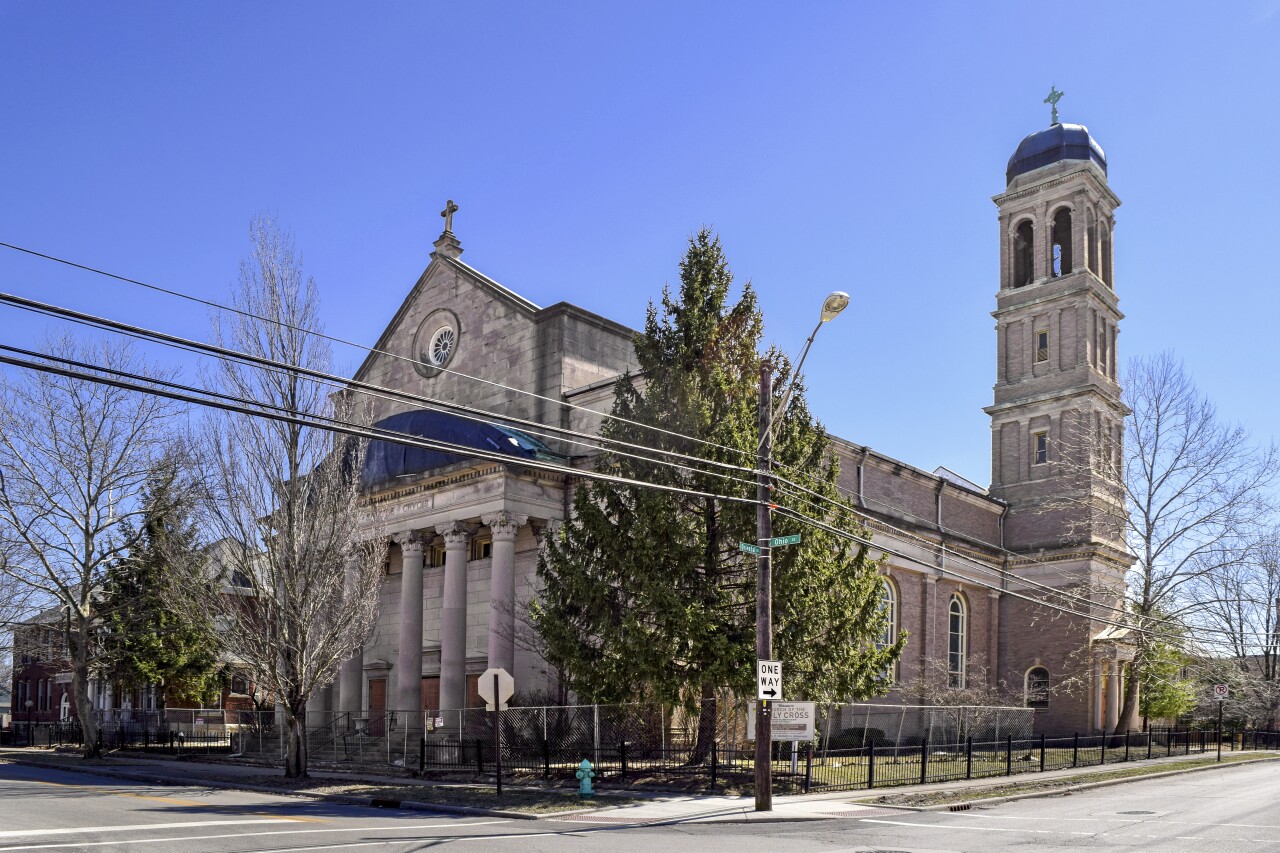INDIANAPOLIS — A spot on Indiana Landmarks' "10 Most Endangered Places" is not a death sentence. Rather, it has proven to increase visibility and support for the state's most neglected historic sites.
According to the organization, only 19 of the 146 most endangered sites listed since 1991 have been demolished, and 95 places are completely restored or no longer endangered.
Among the places listed for 2020 include schools, churches, a train depot and a Carnegie library.
“Indiana Landmarks uses its 10 Most Endangered list in several ways. Sometimes it serves an educational role. It functions as an advocacy tool. And it can assist in raising funds needed to save a place,” Indiana Landmarks president Marsh Davis said. “Every listing comes with significant challenges. In all cases, when an endangered place lands on our list, we commit to seeking solutions that lead to rescue and revitalization."
Here is a listing of Indiana's 10 most endangered places:

Church of the Holy Cross
1401 E. Ohio St., Indianapolis
Built in 1921, the church closed in 2015 when its arched portico collapsed. The Church of the Holy Cross appeared on Indiana Landmarks' 2019 list of endangered places, and since then, the Archdiocese removed its 120-year-old stained glass windows and rejected a proposal to adapt the church for housing. Indiana Landmarks said the Archdiocese has not invested in any kind of maintenance, and the building is doomed to "demolition by neglect."

Downtown Attica
Attica's downtown includes buildings constructed from 1850-1950, including the Attica Hotel, which was built in 1853 and hosted Bing Crosby, Bette Davis and Al Capone. The hotel is vacant and the rear facade of one of its wings collapsed in 2012. An upper corner of the main hotel building suffered similar damage earlier this year.

Elwood Carnegie Library
124 N. 16th St., Elwood
Elwood's Carnegie-funded library operated for 91 years before it closed in 1995. It has been vacant ever since. An out-of-state buyer purchased the property in 2018, but has made no improvements. Indiana Landmarks said water infiltration has damaged interior plaster.

Falley-O’Gara-Pyke House
1014 South Street, Lafayette
The Roman Catholic Diocese of Lafayette plans to demolish the 135-year-old Italianate-style house and replace it with a new rectory, which the city approved. No timeline is set for demolition, but Indiana Landmarks said the church has not committed to the house's preservation.

Gary Roosevelt High School
730 W. 25th St., Gary
The Gary Community School Corporation permanently closed the 90-year-old school after it determined the school building required an estimated $8.6 to $10 million in repairs and cleanup after a failing heat system and frigid temperatures caused pipes to burst and send water into classrooms and offices.

Monon Station
1221 J Street, Bedford
The 94-year-old Indiana limestone structure is currently vacant and a target for vandals. Indiana Landmarks said community leaders and trail advocates are interested in adapting the depot as a trail head for the Milwaukee Road Transportation Trailway.

Reid Memorial Presbyterian Church
1004 N. A St., Richmond
The church, built in 1906 by Richmond industrialist Daniel Reid, has been vacant since 2017. The deed says that Reid's heirs can take ownership of the building if it ceases to function as a church for more than a decade. Out-of-state groups have expressed interest in purchasing the church's Tiffany windows. The church needs up to $4.6 million in repairs.

Romweber House
507 North Walnut, Batesville
The house, which was built in 1911, has been for sale since it was foreclosed in 2012. Its owner, an out-of-state bank, has made minor repairs, but it needs substantial investment.

Tipton County Jail & Sheriff’s Residence
203 S. West St., Tipton
The jail and courthouse are Tipton County's only two National Register-listed buildings. After completing a new $16 million jail earlier this year, Tipton officials vacated the building and began gathering bids for its demolition. Historic jails around the state have been adapted as restaurants, offices, museums and apartments and condos.

Union Literary Institute
8605 E 600 S., Union City
In 1846, a group of anti-slavery Quakers and free Blacks joined together to establish Union Literary Institute. It was one of the first schools to offer higher-level education to all students, regardless of race or gender, according to Indiana Landmarks. All that remains of the institute is a partially collapsed building in the middle of a field. The Union Literacy Institute Preservation Society hoped to restore the building, but a storm in 2012 blew in part of the front wall. The social hopes to construct a pavilion that would surround and protect the ruins and include space to interpret their history.



